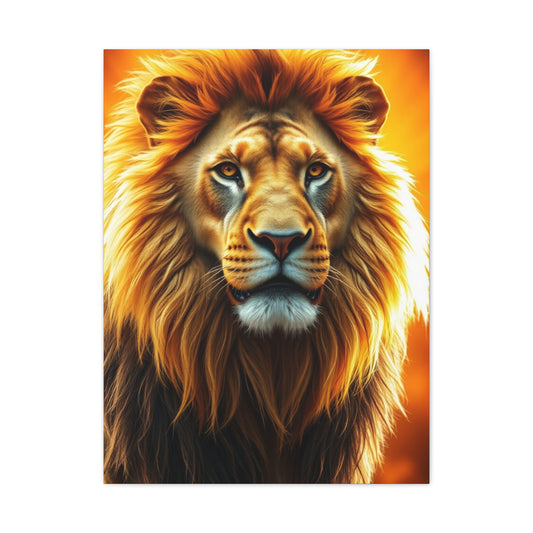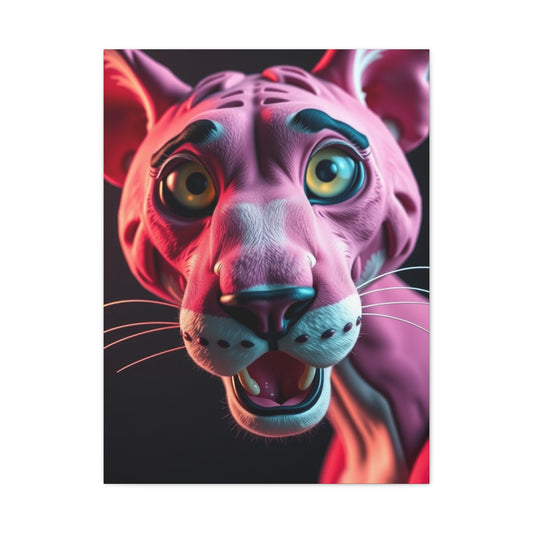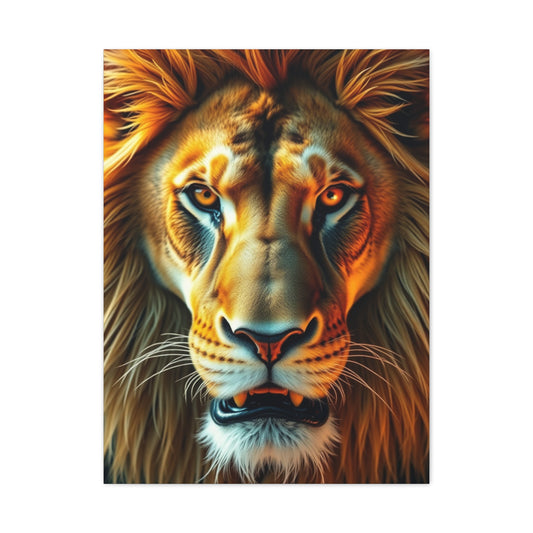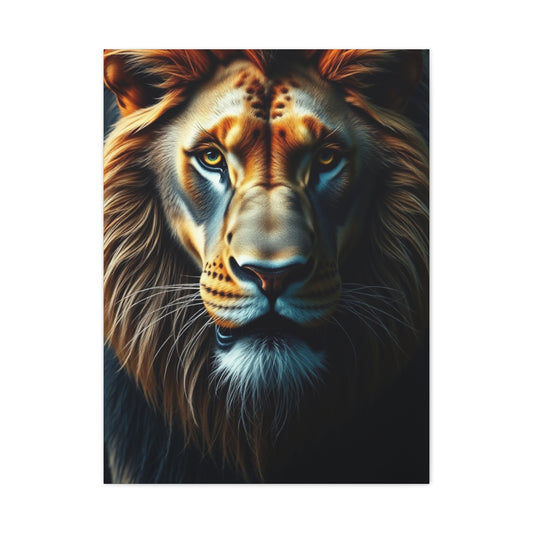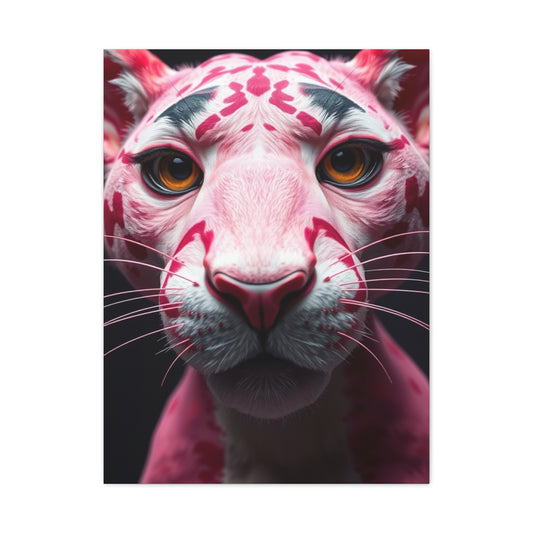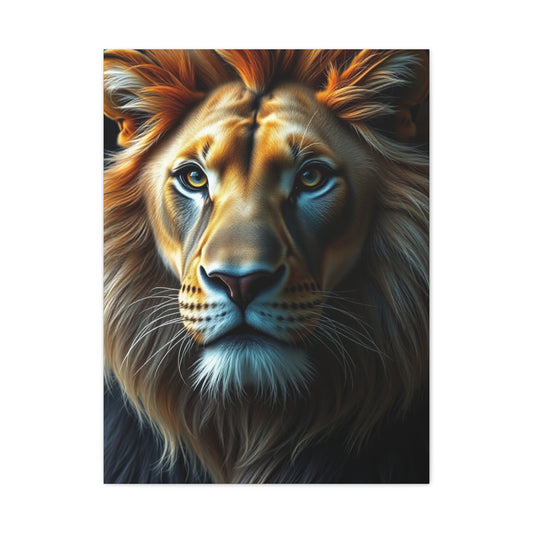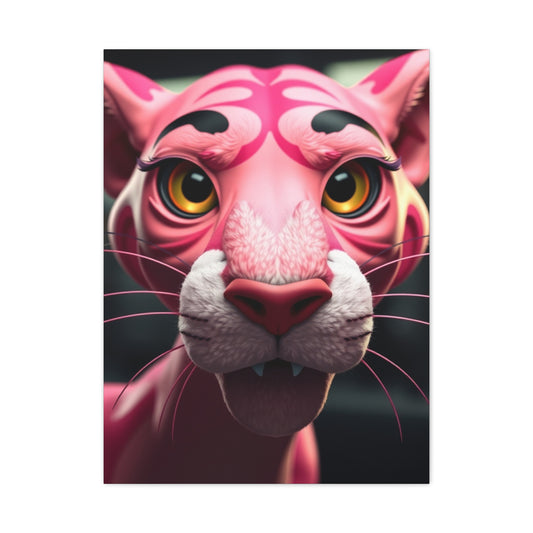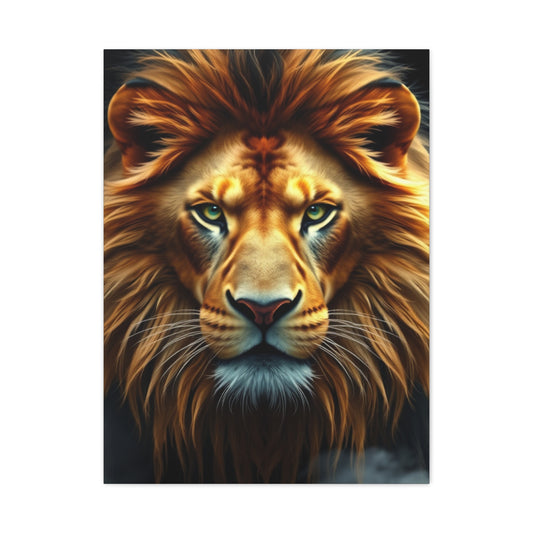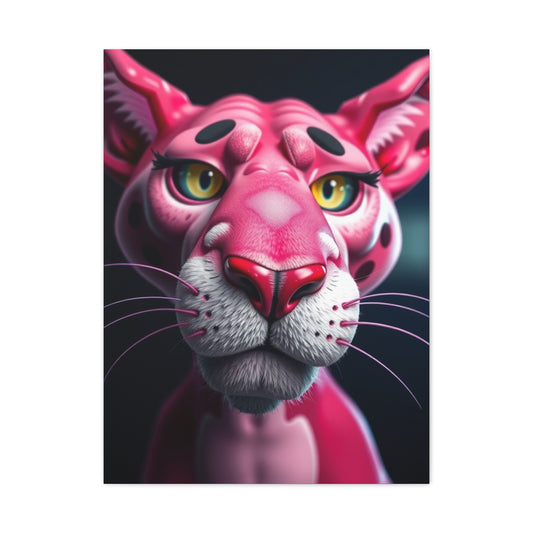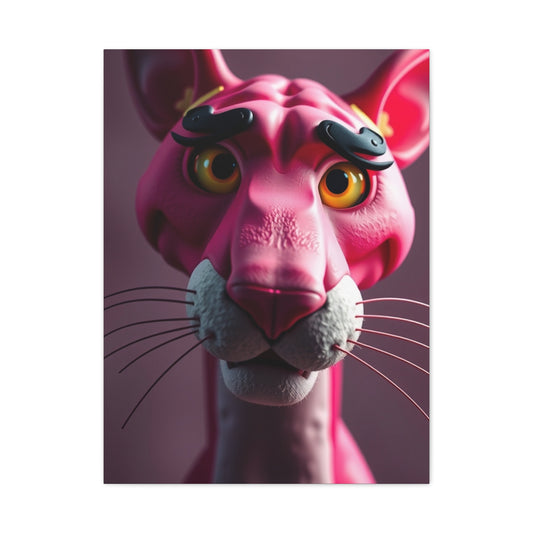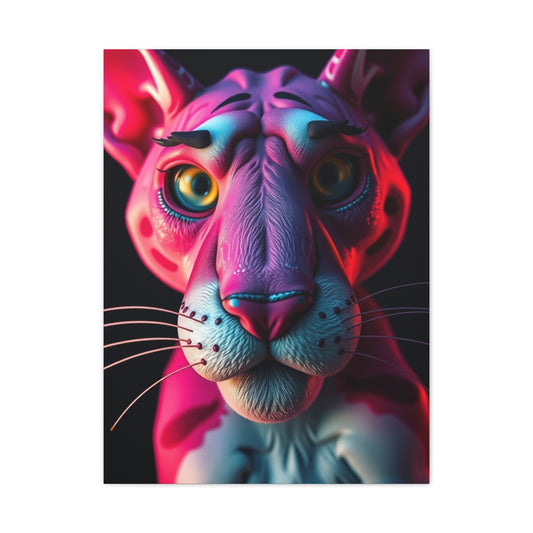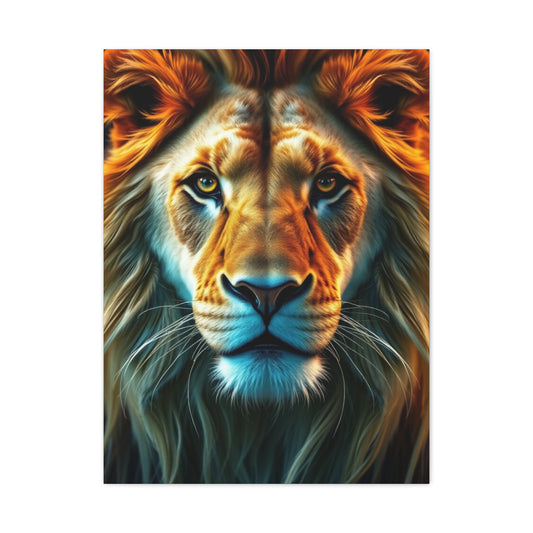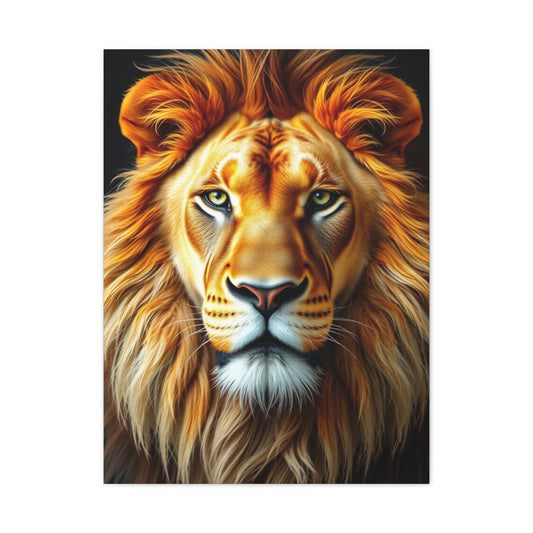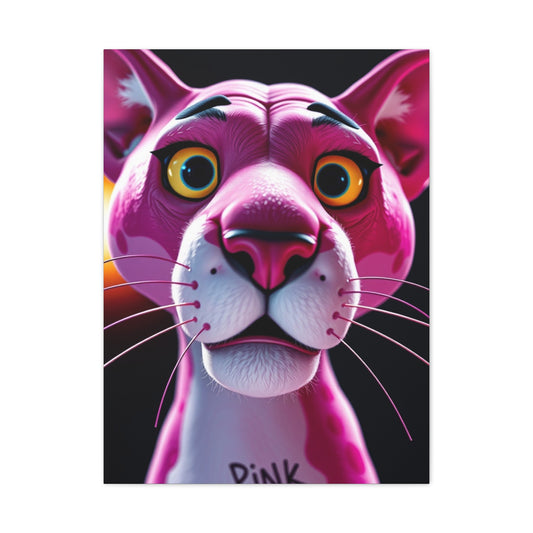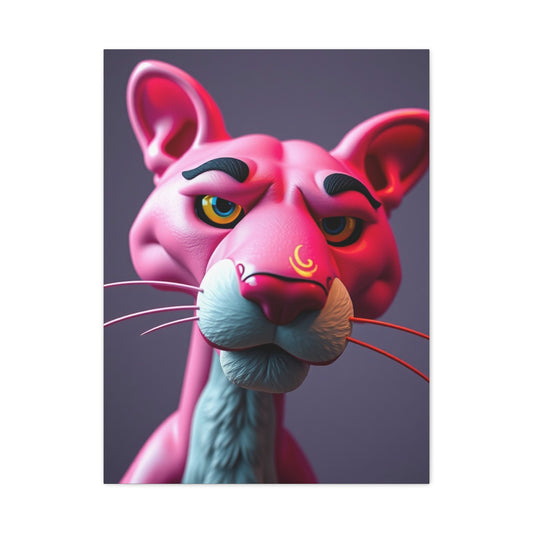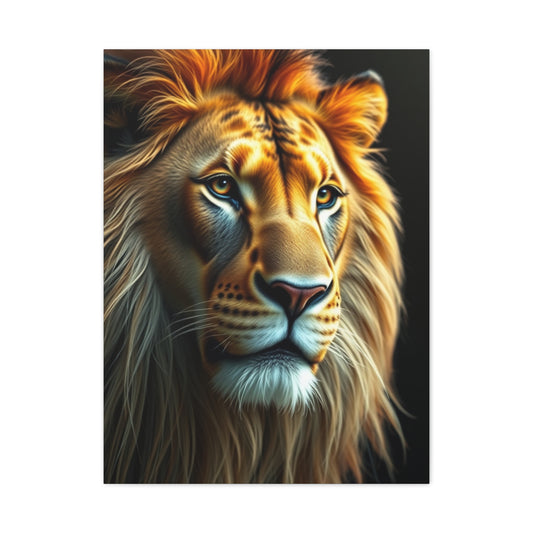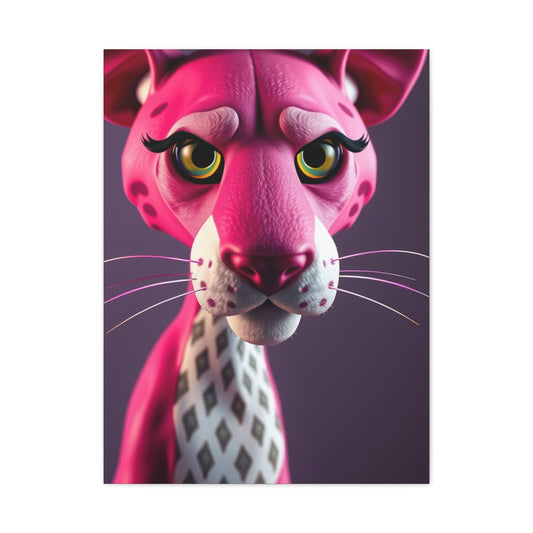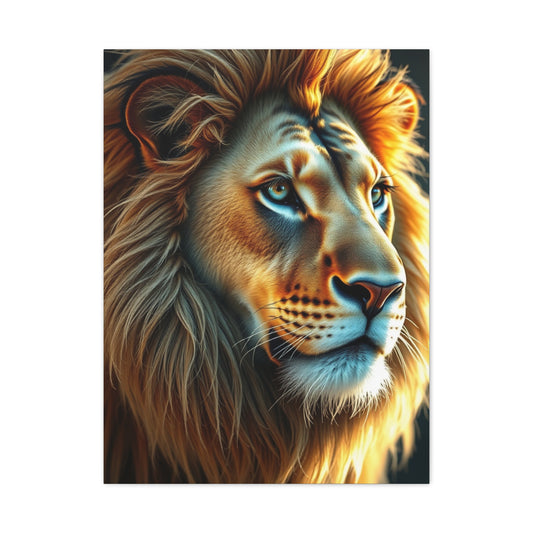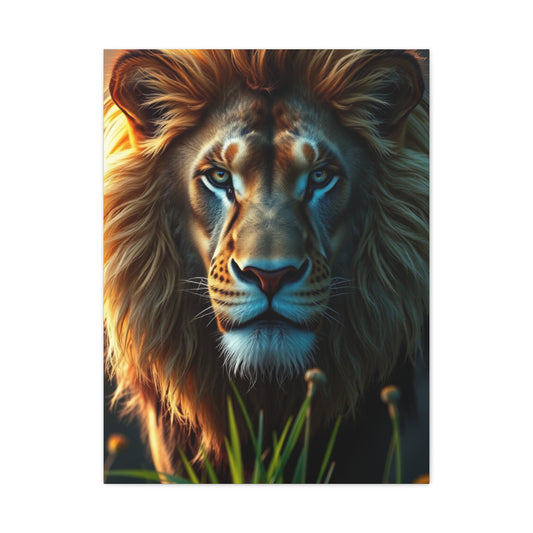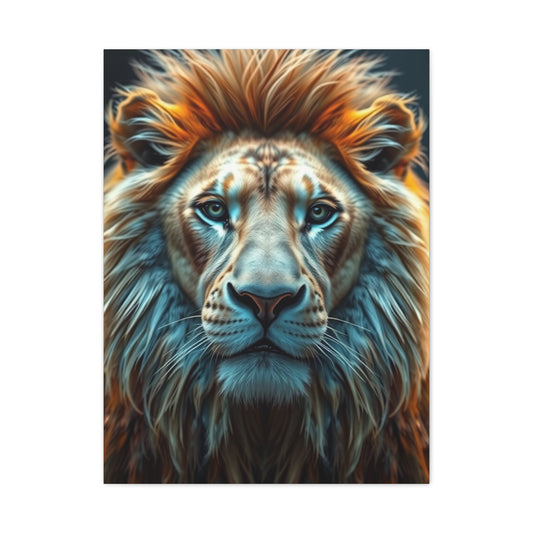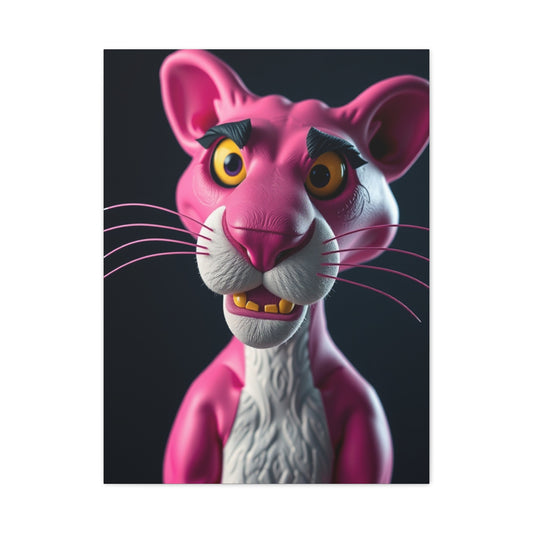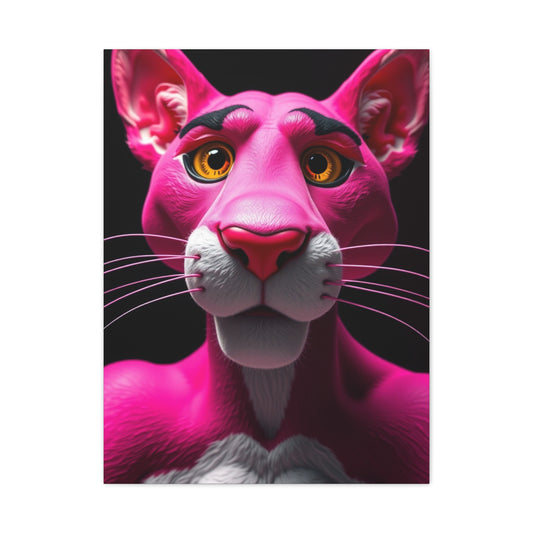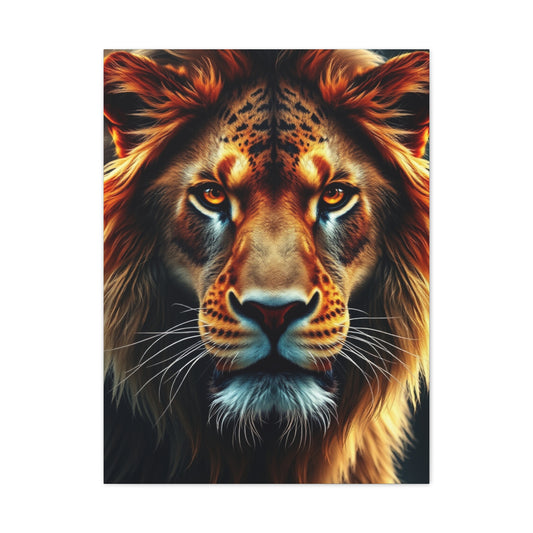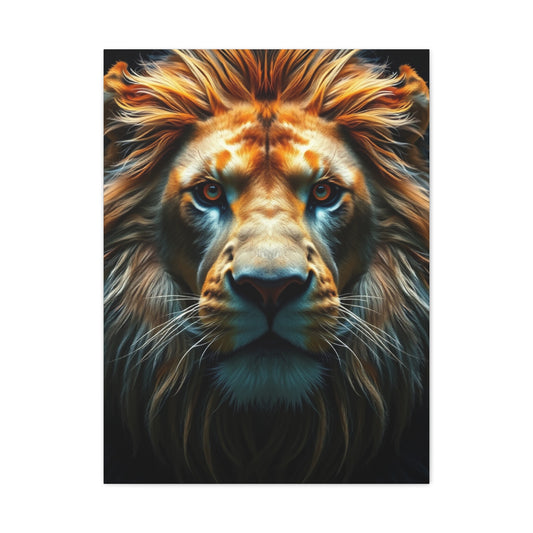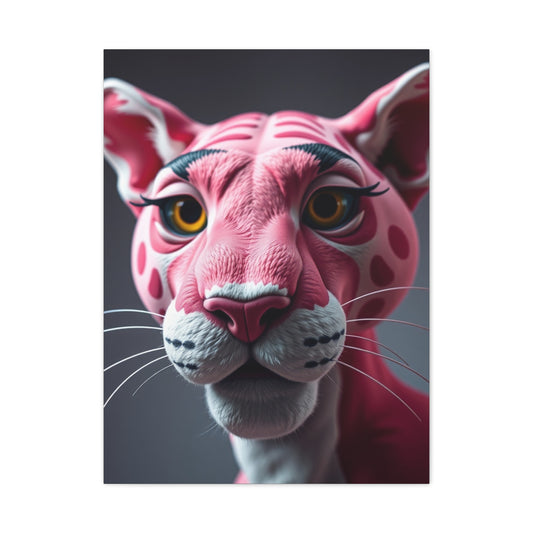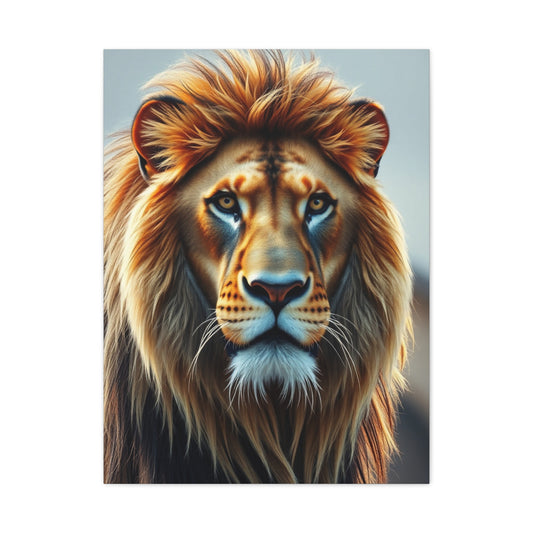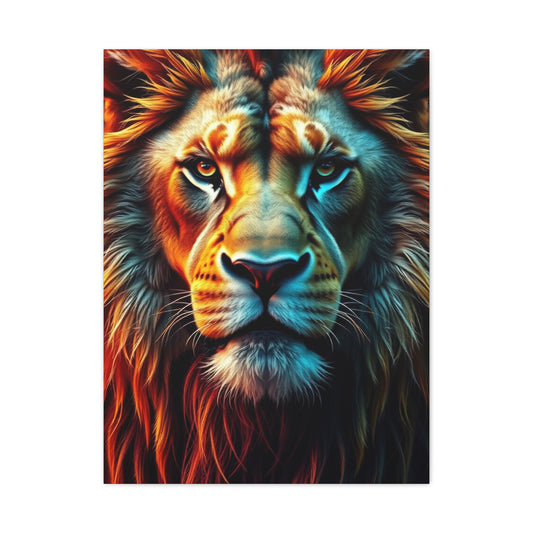Wild Wonders: Exploring Animal Life Through Wall Art
Animal and wildlife art has fascinated humans for millennia, serving as a profound medium to express our connection with the natural world. The earliest evidence of this fascination dates back over 30,000 years to the cave paintings in Lascaux, France, and Chauvet, where early humans depicted majestic creatures such as bison, horses, and deer with astonishing detail and accuracy. These depictions were not mere decoration; they conveyed the spiritual and practical significance of animals, reflecting both admiration and reverence. The images capture not only the physical form of the animals but also their vitality and movement, suggesting an intuitive understanding of anatomy and behavior that would lay the foundation for future artistic endeavors.
The cave paintings also provide a window into the lives of early humans. The animals illustrated were often central to their survival, serving as sources of food, clothing, and tools. Yet beyond practical necessity, these artworks reveal a deeper, almost mystical relationship with wildlife. By immortalizing animals on cave walls, early humans documented their observations and experiences, creating a timeless narrative of coexistence and respect. The artistry, despite the lack of modern tools, demonstrates a remarkable ability to translate observation into visual storytelling, highlighting the origins of animal depiction as both an aesthetic and functional pursuit.
Ancient Civilizations and the Symbolism of Animals
As societies evolved, the role of animals in art transformed, expanding from mere survival documentation to symbolic and spiritual representation. Ancient Egyptian art offers a prime example, where animals were intricately depicted in hieroglyphs, tomb paintings, and sculptures. Each creature carried symbolic weight; cats represented protection and divine grace, while crocodiles and serpents symbolized power and regeneration. Lions and bulls were often associated with strength, authority, and the forces of nature. These representations were not only artistic but also deeply embedded in religious and cultural narratives, reflecting the interconnectedness of human life and the animal kingdom.
In Mesopotamian and Greek art, animals continued to hold symbolic and aesthetic significance. Sculptures, mosaics, and pottery often portrayed mythological creatures or stylized animals, blending observation with imagination. The Greek fascination with naturalism pushed artists to study anatomy and behavior, resulting in lifelike representations that emphasized proportion, movement, and form. Artists such as Polykleitos and later Roman sculptors meticulously studied animals to capture realistic postures, expressions, and textures, demonstrating a sophisticated understanding of the living world that influenced generations of wildlife art.
Medieval Bestiaries and the Interplay of Myth and Reality
During the Middle Ages, animal art took on a unique narrative function through illuminated manuscripts and bestiaries. These illustrated books compiled descriptions of real and fantastical animals, blending observation with moral allegory. Lions were symbols of courage and kingship, while owls represented wisdom or, in some interpretations, ominous forewarning. Medieval artists imbued their works with both educational and spiritual significance, using visual storytelling to convey lessons about virtue, sin, and the natural order.
The artistry of bestiaries reflects a balance between careful observation and imaginative interpretation. Artists often combined elements from different species to create hybrid creatures, demonstrating creativity while reflecting the limited understanding of exotic wildlife in Europe at the time. These works were also portable cultural artifacts, serving as tools for education, reflection, and decoration. Through these manuscripts, animals continued to captivate human imagination, bridging the gap between reality and myth while reinforcing the symbolic power of wildlife in society.
Renaissance Observation and the Scientific Approach
The Renaissance marked a significant shift in animal art, driven by renewed interest in science, anatomy, and the natural world. Artists such as Leonardo da Vinci, Albrecht Dürer, and Hans Holbein the Younger approached animal depiction with meticulous attention to detail, emphasizing accuracy alongside artistic expression. Leonardo’s anatomical studies of horses and other creatures demonstrate a rigorous analysis of muscles, bone structure, and movement, highlighting the interplay between art and science. Dürer’s engravings of animals, including his famous rhinoceros, combined careful observation with imaginative interpretation, influencing European wildlife art for decades.
During this period, the expansion of trade and exploration introduced European artists to previously unknown species, further enriching the visual vocabulary of wildlife art. Exotic animals like parrots, elephants, and tigers began appearing in paintings, illustrations, and tapestries, expanding artistic perspectives beyond familiar fauna. The Renaissance emphasis on observation, proportion, and naturalism transformed wildlife art from symbolic representation to a study of living creatures as objects worthy of admiration in their own right.
The Emergence of Wildlife Art as a Genre
By the 18th and 19th centuries, the depiction of animals evolved into a distinct artistic genre, particularly in Europe and North America. Artists such as John James Audubon elevated wildlife illustration through meticulous documentation of birds and mammals, combining scientific observation with artistic mastery. Audubon’s monumental work, The Birds of America, is celebrated for its life-size representations and dynamic compositions, capturing species in naturalistic poses and habitats. His approach emphasized the importance of accuracy and ecological context, influencing both artistic and scientific communities.
During the same period, European painters such as George Stubbs focused on horses and domestic animals, blending anatomical precision with aesthetic sensibilities. Wildlife art became increasingly popular in private collections, salons, and exhibitions, reflecting society’s growing fascination with the beauty and diversity of the animal kingdom. The genre not only celebrated nature but also reinforced cultural ideals of elegance, power, and refinement, highlighting the multifaceted role of animal depiction in art and society.
Wildlife Art and Conservation in the 20th Century
The 20th century witnessed a new dimension in wildlife art, where artistic expression intersected with environmental awareness and conservation efforts. Artists such as Robert Bateman and Carl Rungius sought to depict animals within their natural habitats, emphasizing ecological accuracy and behavioral authenticity. Their works inspired appreciation for wildlife while raising awareness about the threats facing endangered species and fragile ecosystems. Wildlife art became a tool for education and advocacy, fostering a sense of responsibility toward preserving biodiversity.
Photography and other modern techniques further expanded the reach and impact of wildlife art. Artists began integrating mixed media, sculpture, and large-scale murals to capture the dynamic essence of animals, engaging audiences in immersive experiences. Exhibitions and public installations highlighted the aesthetic and ethical importance of wildlife representation, transforming art into a catalyst for environmental consciousness. The 20th century thus solidified the role of wildlife art not only as decoration but also as a powerful medium to inspire empathy, action, and stewardship for the natural world.
The Timeless Fascination with Animals
Throughout history, the portrayal of animals in art has reflected humanity’s evolving relationship with the natural world. From prehistoric cave paintings to modern conservation-focused artworks, animals have served as subjects of admiration, symbolism, education, and inspiration. This enduring fascination highlights our innate curiosity, empathy, and desire to understand the lives of other creatures that share our planet. The history of wildlife art underscores that, despite technological and cultural changes, the beauty and mystery of the animal kingdom continue to captivate human imagination, bridging cultures, centuries, and continents.
The first part of this exploration lays the foundation for understanding the historical context and evolution of wildlife art. The subsequent parts will delve deeper into global artistic perspectives, notable wildlife art locations, and practical ways to incorporate animal art into modern living spaces, reflecting both aesthetic and conservation-driven motivations. Each artwork carries the power to connect viewers with the hidden lives of animals, offering a window into a world that is as diverse, dynamic, and inspiring as the imagination of the artists themselves.
Symbolism and Spirituality in Chinese Animal Art
In Chinese art, animals have long carried profound symbolic meanings that extend beyond their physical form. Dragons, tigers, cranes, and other creatures are recurring motifs that reflect cultural values, spiritual beliefs, and philosophical ideas. The dragon, often depicted as a majestic, serpentine creature, embodies power, strength, and divine protection. Tigers are associated with courage, military prowess, and the natural order, often portrayed in dynamic poses to capture their ferocity and vitality. Cranes symbolize longevity and grace, frequently featured in serene landscapes to evoke harmony between humans and nature. These representations are not merely decorative; they are visual expressions of moral principles, philosophical thought, and societal ideals. Chinese painters and calligraphers meticulously studied the form, behavior, and symbolic resonance of each animal, blending naturalistic depiction with stylized interpretation to create works that were both aesthetically compelling and culturally meaningful.
The use of animals in Chinese art extends across multiple media, including ink paintings, silk scrolls, porcelain, and architectural decoration. Each medium allows artists to explore different aspects of animal representation, from the fluidity and spontaneity of ink strokes to the intricate detailing possible in porcelain or embroidery. By examining these works, one can trace the philosophical underpinnings of Chinese culture, where animals serve as conduits for understanding the natural world, human morality, and the cosmic order. The interplay of realism and symbolism in Chinese animal art exemplifies how cultural context shapes artistic interpretation, creating a rich tapestry of visual storytelling.
Native American Animal Art: Spirituality and Storytelling
Across the Americas, Native American art offers a unique perspective on the relationship between humans and wildlife. Animals are revered not only for their physical presence but also for their spiritual significance, serving as guides, protectors, and symbols of essential qualities. Eagles, for instance, are considered messengers between the earthly and spiritual realms, embodying vision, strength, and freedom. Bears symbolize courage, introspection, and healing, while wolves represent loyalty, intelligence, and the importance of community. These animals frequently appear in totems, masks, pottery, textiles, and ceremonial objects, forming an integral part of cultural expression and spiritual practice.
In Native American traditions, storytelling is often intertwined with animal art. Each depiction conveys a narrative, a lesson, or a historical memory, emphasizing the interconnectedness of all living beings. The stylistic approach can range from highly abstract representations to detailed naturalistic renderings, reflecting both local aesthetics and spiritual priorities. By incorporating animals into ceremonial regalia and sacred spaces, Native American artists honor their role in the ecosystem and the collective imagination. This artistic tradition demonstrates a deep understanding of ecological and spiritual relationships, where every creature is recognized as part of a complex and meaningful world.
African Wildlife Art: Identity, Ritual, and Symbolism
African art offers another rich perspective on animal depiction, often integrating wildlife into masks, sculptures, textiles, and ceremonial objects. Animals in African cultures are frequently associated with ancestry, social identity, and ritual practice. Elephants symbolize strength and wisdom, leopards convey authority and agility, and birds often serve as messengers between the living and spiritual worlds. The use of animal motifs extends beyond mere representation; it encodes stories, social values, and historical memory, creating visual language that communicates complex ideas across generations.
Traditional African artists employ a variety of techniques, from carving and casting to weaving and painting, to bring animal imagery to life. Each form and medium offers unique possibilities for interpretation, whether through geometric abstraction in masks or lifelike representation in sculptures. Many communities use animal art in initiation ceremonies, religious rites, and communal storytelling, reinforcing the role of wildlife as both a source of inspiration and a symbol of collective identity. By analyzing African wildlife art, one gains insight into a culture that places animals at the heart of social, spiritual, and artistic life.
European Interpretations: Naturalism and Myth
In Europe, the depiction of animals has historically combined observation with allegory and myth. During the Middle Ages, illuminated manuscripts and bestiaries cataloged both real and imaginary creatures, often imbuing them with moral or symbolic significance. Lions represented courage and nobility, while serpents symbolized deceit and temptation. Artists sought to convey not only physical characteristics but also the moral and symbolic resonance of animals, making them central figures in religious and educational narratives.
The Renaissance and subsequent centuries saw a shift toward naturalism and scientific observation. Artists such as Albrecht Dürer, Leonardo da Vinci, and George Stubbs approached wildlife with meticulous attention to anatomical accuracy and behavioral authenticity. Exotic animals brought from distant lands were often depicted with a blend of curiosity and idealization, reflecting European fascination with the unknown. Illustrations and paintings served not only as aesthetic objects but also as educational tools, documenting species and habitats with precision. European traditions thus demonstrate an evolving balance between symbolic meaning, mythological narrative, and naturalistic representation in wildlife art.
Indian and Southeast Asian Animal Art: Divine and Sacred Representation
In India and Southeast Asia, animals occupy a central place in artistic, religious, and cultural traditions. Hindu, Buddhist, and Jain art frequently depicts animals as divine beings, vehicles for gods, or embodiments of moral virtues. Elephants, associated with Ganesha, symbolize wisdom, strength, and good fortune. Lions appear as protectors and royal symbols, while serpents hold spiritual significance as guardians of water and fertility. In Southeast Asian art, mythological creatures such as the Garuda or Naga integrate animal forms into religious iconography, blending natural observation with imaginative symbolism.
Temple carvings, miniature paintings, and ritual objects showcase the diversity and creativity of animal art in these regions. Artists often emphasize fluidity, elegance, and dynamic motion, capturing both physical and symbolic characteristics. The representation of animals in sacred contexts highlights their integral role in storytelling, moral instruction, and spiritual reflection. Indian and Southeast Asian traditions demonstrate how wildlife art can transcend mere aesthetic appeal, becoming a medium through which cultural values and spiritual insights are communicated.
Indigenous Australian Art: Connection to Land and Animal Life
Indigenous Australian art provides a profound perspective on the relationship between animals, people, and the landscape. Animals are frequently depicted in rock art, dot paintings, bark paintings, and ceremonial objects, symbolizing ancestral beings, spiritual guides, and ecological knowledge. Kangaroos, emus, snakes, and other native species appear in dynamic compositions that convey movement, behavior, and connection to the Dreamtime, the foundational cosmology of Indigenous Australian cultures.
The symbolic and ecological significance of animals is central to these artworks. They are not merely subjects; they are participants in stories, carriers of ancestral wisdom, and indicators of environmental health. Artists use abstract patterns, colors, and techniques to capture the essence of the creatures and their role in the broader ecosystem. Indigenous Australian animal art emphasizes the interconnectedness of all life, blending observation, imagination, and spiritual insight into a cohesive visual language that celebrates both wildlife and cultural heritage.
Symbolism and Emotional Resonance Across Cultures
Across global traditions, animals in art serve multiple functions: they are symbols of spiritual power, embodiments of moral and ethical principles, markers of identity, and conduits for emotional resonance. From the protective dragons of China to the sacred elephants of India, the majestic lions of Africa,, to the mystical creatures of Europe, the artistic portrayal of animals reflects humanity’s fascination with the living world. Artists translate observation, myth, and belief into visual narratives that educate, inspire, and connect viewers to the natural and spiritual realms.
Animals evoke emotions that transcend language and culture. Fear, admiration, affection, awe, and reverence are all communicated through artistic representation. By examining these cultural perspectives, one gains insight into both the diversity of human expression and the universality of wildlife as a source of inspiration. Wildlife art thus functions as a bridge, linking human imagination with the natural world and fostering a shared appreciation for the beauty, mystery, and vitality of animals across the globe.
Artistic Techniques and Media Around the World
Different regions employ distinctive techniques and media to depict wildlife, reflecting available resources, cultural priorities, and artistic traditions. Ink, watercolor, and silk painting dominate East Asian wildlife art, emphasizing fluidity and spontaneity. Carving, casting, and textile work characterize African traditions, focusing on abstraction and symbolic expression. In Europe, oil painting, engraving, and sculpture enable detailed naturalism and anatomical precision. In the Americas, painting, pottery, weaving, and ceremonial objects convey both realism and spiritual symbolism. Indigenous Australian art employs dot painting, rock engravings, and bark painting, integrating abstract forms to represent movement, behavior, and spiritual narratives. These diverse techniques illustrate how material and method influence the portrayal and interpretation of animals, shaping the way viewers experience wildlife art.
Animals as Cultural Narratives
Beyond aesthetics, animal art functions as a narrative device, preserving cultural memory, ecological knowledge, and ethical values. Each depiction tells a story about the role of the creature in human life, the environment it inhabits, and the beliefs and aspirations of the people who created it. From mythological beasts to realistic renderings, wildlife art communicates complex layers of meaning, merging observation with imagination and personal or collective interpretation. By studying these narratives, one gains insight into the societies that produced them, their values, and their relationship with the natural world.
Bridging Time and Culture
Global wildlife art demonstrates the continuity of human fascination with animals. Despite differences in geography, culture, and historical context, artists share a common desire to observe, understand, and celebrate the living world. From prehistoric caves to contemporary galleries, wildlife art transcends time and borders, offering a universal language that communicates wonder, respect, and curiosity. This interconnected perspective highlights the enduring significance of animals in human creativity, emphasizing how art reflects both our individual experiences and our collective cultural heritage.
The African Savannah: A Canvas of Majesty
The African savannah has long been a source of inspiration for artists seeking to capture the majesty and diversity of wildlife. Its vast landscapes, punctuated by acacia trees, golden grasses, and expansive skies, provide a dramatic backdrop for creatures such as lions, elephants, giraffes, cheetahs, and zebras. Artists are drawn to the savannah not only for its iconic species but also for the interplay of light, shadow, and movement that creates dynamic compositions. The African landscape allows for depictions that emphasize scale, energy, and the raw beauty of nature, often highlighting the social structures, behaviors, and interactions among animals. Wildlife art inspired by the savannah conveys a sense of grandeur and timelessness, reminding viewers of the delicate balance that sustains these ecosystems.
Artists working in this region often immerse themselves in the environment, observing animals in their natural habitats to capture authentic poses, gestures, and expressions. This commitment to direct observation enhances the realism and vitality of their works, whether through painting, photography, sculpture, or mixed media. Beyond aesthetic considerations, the African savannah inspires narratives of survival, adaptation, and interdependence, reflecting the interconnectedness of species and the profound influence of the environment on animal life.
The Amazon Rainforest: Vibrancy and Diversity
The Amazon rainforest, with its dense foliage, winding rivers, and unparalleled biodiversity, offers another rich source of inspiration for wildlife artists. The rainforest teems with life, from colorful parrots and toucans to elusive jaguars, sloths, and tree frogs. Its vibrant palette of greens, yellows, reds, and blues provides a natural canvas that challenges artists to capture the intricate interplay of color, light, and texture. Paintings and illustrations inspired by the Amazon often highlight the hidden intricacies of the jungle, revealing species that are rarely seen outside their natural environment.
Artists working with Amazonian themes frequently focus on both the individual beauty of species and the complex ecosystems they inhabit. By depicting interactions between predators and prey, pollinators and plants, or nocturnal and diurnal creatures, wildlife art communicates the delicate balance of rainforest life. The rainforest’s visual richness encourages experimentation with style, medium, and technique, from highly detailed realism to abstract interpretations that convey movement, energy, and the emotional impact of the environment. Art inspired by the Amazon emphasizes the importance of conservation, raising awareness about habitat destruction and the need to preserve one of the planet’s most vital ecological regions.
The Arctic and Antarctic: Stark Beauty and Survival
The polar regions, with their stark, icy landscapes, offer a dramatically different form of inspiration for wildlife artists. The Arctic and Antarctic are home to species uniquely adapted to extreme conditions, such as polar bears, arctic foxes, penguins, seals, and whales. The interplay of ice, snow, and light creates minimalist yet striking compositions, emphasizing contrasts, reflections, and textures. Artists drawn to these regions often focus on the survival challenges faced by polar wildlife, portraying resilience, adaptation, and the beauty of creatures thriving in harsh environments.
The polar environment encourages careful observation and attention to detail. The unique lighting, color palette, and atmospheric conditions of these regions inform the tone and style of artwork, often producing serene, contemplative, or dramatic visual narratives. Wildlife art from polar regions communicates both aesthetic appeal and ecological urgency, highlighting the impacts of climate change, melting ice, and human activity on these fragile habitats. Through artistic representation, viewers are invited to connect emotionally with animals that are distant yet profoundly affected by global environmental changes.
The Australian Outback: Unique Fauna and Landscape
Australia’s outback provides a distinct source of inspiration due to its remarkable and unusual wildlife. Kangaroos, koalas, wombats, emus, and dingoes populate this arid landscape, which is characterized by red earth, sparse vegetation, and expansive skies. Artists are often captivated by the outback’s stark contrasts, unique forms, and the behaviors of its endemic species. The landscape’s openness allows for compositions that emphasize motion, perspective, and the relationship between animals and their environment.
Australian wildlife art often blends observation with storytelling, reflecting Indigenous cultural connections, ecological awareness, and aesthetic sensibilities. Artists may incorporate traditional techniques, such as dot painting, to evoke patterns and textures inspired by the landscape and animal life. By highlighting distinctive species and landscapes, outback-inspired artwork celebrates biodiversity, conveys cultural narratives, and promotes awareness of conservation issues specific to Australia’s ecosystems. The Australian outback remains a powerful muse for artists seeking to depict creatures that are simultaneously familiar, exotic, and emblematic of resilience in challenging environments.
Rainforests of Southeast Asia: Myth, Nature, and Diversity
Southeast Asian rainforests offer lush environments where vibrant flora and fauna provide a vivid palette for artists. Tigers, orangutans, hornbills, and gibbons inhabit dense tropical forests that inspire compositions emphasizing both realism and mysticism. The interplay of light filtering through the canopy, misty rivers, and cascading waterfalls provides dramatic visual opportunities for dynamic wildlife depictions. Southeast Asian artists often integrate cultural symbolism, mythological references, and ecological observation, creating works that communicate both aesthetic and narrative depth.
The region’s art reflects the spiritual and cultural significance of wildlife, linking human communities to their environment through storytelling, ritual, and tradition. Paintings, carvings, and textile works may depict animal behavior, divine associations, or allegorical interpretations, combining naturalism with imagination. These works serve as both artistic expressions and cultural preservation tools, highlighting the importance of biodiversity, the interconnectedness of ecosystems, and the ethical responsibilities humans hold toward the natural world.
North American Wildlife: Conservation and Naturalism
North America has a rich tradition of wildlife art, particularly in the context of conservation and naturalism. Artists such as John James Audubon and Carl Rungius documented birds, mammals, and other species with meticulous precision, emphasizing anatomical accuracy, behavior, and ecological context. The continent’s diverse habitats, from forests and mountains to prairies and wetlands, provide abundant subjects for artistic exploration. North American wildlife art often reflects the relationship between humans and the environment, highlighting the importance of preservation, ethical observation, and ecological awareness.
Contemporary North American artists continue to innovate in style and medium, producing works that range from highly realistic portraits to abstract interpretations. By observing animals in their natural habitats, artists capture motion, personality, and interspecies interactions. These works often serve educational and advocacy purposes, raising awareness about habitat destruction, endangered species, and the impact of human activity on wildlife. The tradition of North American wildlife art demonstrates the capacity of visual representation to inspire stewardship, connection, and understanding of the natural world.
The Role of Natural Habitats in Artistic Interpretation
Natural habitats play a crucial role in shaping wildlife art. The environment provides context, influences lighting and composition, and informs behavioral observation. Artists often immerse themselves in the ecosystems they wish to depict, studying seasonal changes, migration patterns, social interactions, and feeding habits. By incorporating elements of habitat into artwork, the artist creates a holistic portrayal that communicates both the individuality of species and the interdependence of ecological systems. Habitat-focused wildlife art emphasizes realism, storytelling, and emotional resonance, fostering a deeper connection between viewers and the natural world.
The depiction of habitats also allows artists to explore environmental concerns and conservation messages. By highlighting the beauty, complexity, and vulnerability of ecosystems, wildlife art serves as a compelling reminder of the importance of preserving natural landscapes. Whether illustrating the savannah, rainforest, tundra, desert, or wetland, habitat-centered compositions encourage audiences to appreciate not only the animals themselves but also the environments that sustain them.
Milestones in Wildlife Art History
The evolution of wildlife art can be traced through key milestones that mark shifts in style, technique, and cultural significance. In the Paleolithic era, cave paintings conveyed early human observation and reverence for animals. Ancient civilizations incorporated symbolic representation, spiritual significance, and mythological associations. The Renaissance introduced scientific observation, anatomical accuracy, and naturalistic rendering, elevating the artistic study of animals. The 18th and 19th centuries established wildlife art as a distinct genre, emphasizing documentation, realism, and aesthetic expression. The 20th century expanded artistic media, integrated conservation awareness, and explored abstract and mixed-media approaches, reflecting a growing understanding of ecological interconnections and environmental ethics.
These milestones demonstrate how wildlife art has continually evolved to reflect both human understanding of nature and societal values. Each period contributes to a cumulative tradition, linking observation, imagination, symbolism, and advocacy. By studying these milestones, contemporary artists and audiences gain insight into the historical and cultural contexts that shape wildlife representation, as well as the enduring fascination humans hold for the natural world.
Emotional and Educational Impact of Wildlife Art
Wildlife art’s significance extends beyond visual appeal. By capturing the essence of animals in their habitats, artists evoke empathy, curiosity, and appreciation for biodiversity. Detailed depictions can educate viewers about anatomy, behavior, and ecological relationships, fostering a sense of connection and responsibility. Artworks may inspire conservation efforts, promote ethical wildlife observation, and encourage engagement with environmental challenges. Whether in galleries, private collections, or public spaces, wildlife art serves as a medium for both emotional and educational impact, translating aesthetic appreciation into understanding and advocacy.
The emotional resonance of wildlife art also strengthens human-animal connections. Observing the grace of a cheetah in motion, the playfulness of river otters, or the majesty of a soaring eagle encourages reflection, wonder, and respect. This emotional engagement transcends cultural and linguistic boundaries, creating a shared human experience that celebrates the diversity and vitality of life on Earth. Through such art, viewers are invited to consider their role in the stewardship of wildlife and natural habitats, connecting aesthetic experience with ethical awareness.
Transforming Living Spaces with Wildlife Art
Bringing wildlife art into a home can transform ordinary spaces into environments that celebrate the beauty and diversity of nature. Each piece of animal art carries a story, emotion, and a connection to the natural world, enriching the atmosphere of the space it inhabits. In living rooms, large-scale paintings or striking prints of animals such as lions, elephants, or eagles can serve as a central focal point, adding drama, sophistication, and visual interest. The use of bold wildlife imagery paired with neutral or earth-toned furnishings creates balance, allowing the artwork to command attention while harmonizing with the surrounding decor.
Living room compositions can vary in style from realistic oil paintings that showcase anatomical precision and behavioral authenticity to abstract interpretations that convey movement, energy, and emotion. Panoramic scenes depicting multiple species in their natural habitats can evoke a sense of awe and wonder, encouraging viewers to engage with the artwork and the stories it tells. By thoughtfully selecting pieces that resonate with personal taste and lifestyle, homeowners can create an environment that is both aesthetically appealing and emotionally enriching.
Children’s Rooms: Fostering Imagination and Curiosity
In children’s bedrooms, wildlife art offers a playful and educational dimension. Cheerful and colorful illustrations of animals such as elephants, giraffes, foxes, and birds can spark imagination, nurture curiosity, and encourage a lifelong appreciation for nature. Art in these spaces often incorporates whimsical elements, soft textures, or three-dimensional features such as wall decals or plush toys, creating an immersive environment that stimulates creativity.
Beyond aesthetics, wildlife art in children’s spaces provides educational value, offering visual introductions to different species, habitats, and behaviors. Stories and symbolism can be subtly integrated into the artwork, reinforcing lessons about empathy, environmental stewardship, and biodiversity. By surrounding children with visual representations of the natural world, parents and educators can foster an early connection to wildlife, encouraging curiosity, observation, and a sense of wonder.
Creating Calm and Serenity with Wildlife Art
Certain spaces in a home, such as studies, bedrooms, or meditation areas, benefit from wildlife art that evokes calmness and tranquility. Serene depictions of aquatic life, birds in flight, or peaceful forest scenes can create a soothing atmosphere conducive to relaxation and reflection. Paintings of dolphins gliding through crystal-clear waters or flocks of birds soaring across a sunset sky invite contemplation and provide a mental escape from the pressures of daily life.
The selection of color palette, composition, and subject matter plays a crucial role in establishing a serene environment. Soft, muted tones combined with gentle lines and flowing movement convey a sense of balance and harmony. By choosing artworks that embody tranquility and grace, homeowners can enhance mindfulness, reduce stress, and create spaces that encourage restorative experiences. Wildlife art thus becomes not only decorative but also therapeutic, reinforcing emotional well-being and fostering a deeper connection to nature.
Dining Rooms: Sparking Conversation
In dining areas, wildlife art can serve as a conversation starter and a source of engagement during social gatherings. A series of smaller pieces featuring a variety of species or a single dramatic painting can set the tone for the room, combining aesthetic appeal with intellectual stimulation. Detailed sketches of owls, vibrant paintings of peacocks, or dynamic representations of predator-prey interactions invite discussion and reflection, allowing guests to explore both the artistic and ecological dimensions of the work.
Dining room compositions benefit from careful curation of scale, color, and thematic coherence. Coordinating artworks with interior design elements such as furniture, lighting, and textiles ensures that the room feels cohesive and inviting. By integrating wildlife art into shared spaces, homeowners can create an environment that encourages dialogue, appreciation, and a shared sense of wonder about the natural world.
Hallways and Transitional Spaces: Creating Mini Galleries
Often-overlooked areas such as hallways, staircases, or entryways offer unique opportunities for displaying wildlife art. These transitional spaces can be transformed into mini-galleries, showcasing a curated collection of smaller artworks or themed series. By selecting pieces with complementary color palettes, subject matter, or style, homeowners can create visual continuity and narrative flow, turning simple passages into engaging experiences.
Gallery-style arrangements allow for exploration and discovery, encouraging viewers to pause and engage with each piece. The diversity of species, habitats, and artistic interpretations in these collections enhances visual interest and invites contemplation. Even brief encounters with wildlife art in transitional spaces can evoke emotional responses, spark curiosity, and reinforce a connection to the natural world.
Home Offices: Inspiration and Focus
For those working from home, wildlife art can serve as a source of inspiration and motivation. Images depicting strength, perseverance, and resilience—such as a salmon swimming upstream or a cheetah in mid-sprint—can provide daily reminders of determination and focus. Strategically placed artwork can enhance productivity, creativity, and overall well-being, creating an environment that supports professional endeavors while maintaining a connection to nature.
The selection of artwork for home offices should consider personal values, professional goals, and the desired mood of the space. Bold, dynamic imagery can energize the room and stimulate creativity, while serene, contemplative depictions may encourage focus and clarity. By integrating wildlife art thoughtfully, home offices become spaces that balance functional efficiency with emotional and aesthetic enrichment.
Bathrooms and Private Retreats: Mini Escapes
Even spaces such as bathrooms can benefit from the presence of wildlife art. Waterproof prints or framed pieces depicting serene underwater scenes, exotic jungle fauna, or tranquil landscapes can transform bathrooms into refreshing mini-retreats. These artworks invite brief moments of reflection and escape, allowing individuals to reconnect with the natural world during daily routines.
The strategic use of wildlife art in private areas enhances ambiance, mood, and sensory experience. By selecting pieces that harmonize with color schemes, textures, and lighting, homeowners can create cohesive and immersive environments. In these intimate spaces, art provides both visual pleasure and emotional respite, enriching daily rituals with a touch of natural beauty.
Mixing Styles and Media for Depth and Personality
Incorporating multiple styles and media can add depth, personality, and dynamism to a home environment. Combining realistic oil paintings with modern abstract pieces, traditional ink illustrations with contemporary digital prints, or sculptures with wall-mounted paintings allows for a layered and eclectic approach to décor. The juxtaposition of styles encourages visual exploration, highlighting contrasts and connections between different artistic interpretations of wildlife.
Experimenting with scale, color, and material further enhances the impact of wildlife art. Large, commanding pieces draw attention and create focal points, while smaller, subtle works add nuance and detail. Sculptural elements or textured surfaces introduce dimensionality, encouraging tactile engagement and reinforcing the physical presence of the animals depicted. By thoughtfully mixing styles and media, homeowners create environments that feel dynamic, personalized, and visually stimulating.
Personal Connections to Wildlife Art
Selecting wildlife art that resonates on a personal level strengthens the emotional impact and meaningfulness of a space. Whether depicting a favorite animal, a species of symbolic significance, or an ecological cause of passion, personal connections imbue artwork with unique value. Such pieces become more than decorative objects; they serve as reminders of personal experiences, aspirations, and ethical commitments.
Incorporating personally meaningful wildlife art encourages reflection, conversation, and a deeper sense of identity. A painting of a beloved pet, a depiction of an endangered species that one seeks to protect, or a representation of a culturally significant animal can evoke emotions, spark memories, and reinforce values. By aligning artistic choices with personal narratives and ecological awareness, homeowners create spaces that are both aesthetically pleasing and profoundly meaningful.
Emotional and Educational Benefits of Wildlife Art
Wildlife art in the home offers significant emotional and educational benefits. Visually engaging depictions of animals foster empathy, curiosity, and connection, encouraging viewers to observe, understand, and appreciate the natural world. Detailed representations provide insights into anatomy, behavior, and ecological relationships, while symbolic or abstract interpretations stimulate imagination and reflection. Art in domestic spaces thus bridges aesthetic enjoyment with intellectual engagement and emotional resonance.
Educationally, wildlife art can raise awareness about species diversity, environmental challenges, and conservation priorities. By presenting animals within their natural contexts, artworks highlight the importance of habitats, ecological interactions, and human responsibility. Emotional engagement with wildlife through art can inspire proactive behaviors, from supporting conservation initiatives to adopting sustainable lifestyle practices. The integration of wildlife art into daily life enhances understanding, appreciation, and ethical awareness.
Creating a Cohesive Home Environment
To maximize the impact of wildlife art, careful consideration of placement, scale, style, and thematic coherence is essential. Coordinating artworks across rooms or within galleries can create a sense of continuity, narrative flow, and visual harmony. Complementary color schemes, balanced compositions, and thoughtful curation ensure that each piece contributes to the overall atmosphere of the home while maintaining individuality and diversity.
Cohesive integration of wildlife art transforms domestic spaces into immersive environments that reflect personality, values, and aesthetic sensibilities. Whether highlighting dramatic focal points, creating calming zones, or encouraging exploration through mini-galleries, strategic placement enhances the visual, emotional, and intellectual impact of each artwork. Thoughtful curation also allows homeowners to tell a story through their art, celebrating the beauty, diversity, and significance of the natural world.
Conclusion:
Incorporating wildlife art into modern homes offers a powerful means of connecting with nature, expressing personal values, and enriching living environments. From living rooms and bedrooms to dining areas, hallways, offices, and bathrooms, thoughtfully chosen and strategically placed artwork transforms spaces into immersive experiences that celebrate the hidden lives of animals. By combining diverse styles, mediums, and subjects, homeowners create dynamic, meaningful, and visually stimulating interiors.
Wildlife art fosters emotional engagement, intellectual curiosity, and ethical reflection, serving as a bridge between human experience and the natural world. It provides aesthetic beauty, educational insights, and opportunities for personal connection, encouraging appreciation, empathy, and environmental awareness. By integrating wildlife art into the home, individuals create spaces that inspire, educate, and delight, reflecting both the wonder of nature and the richness of human creativity. Each piece becomes a conversation starter, a source of inspiration, and a reminder of the enduring relationship between humans and the diverse, fascinating creatures that share our planet.

